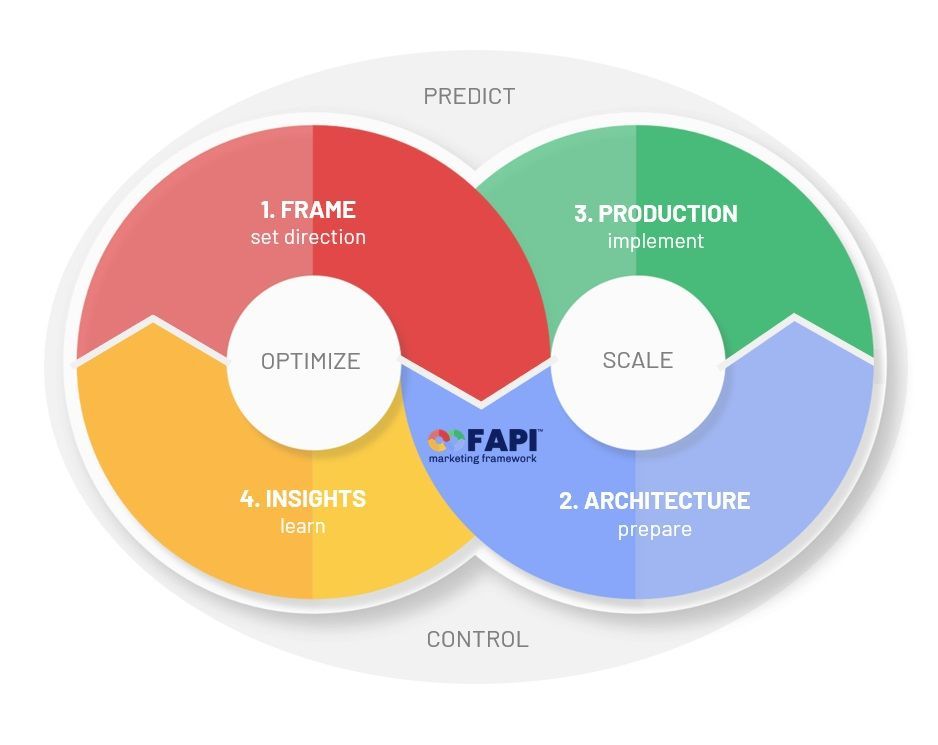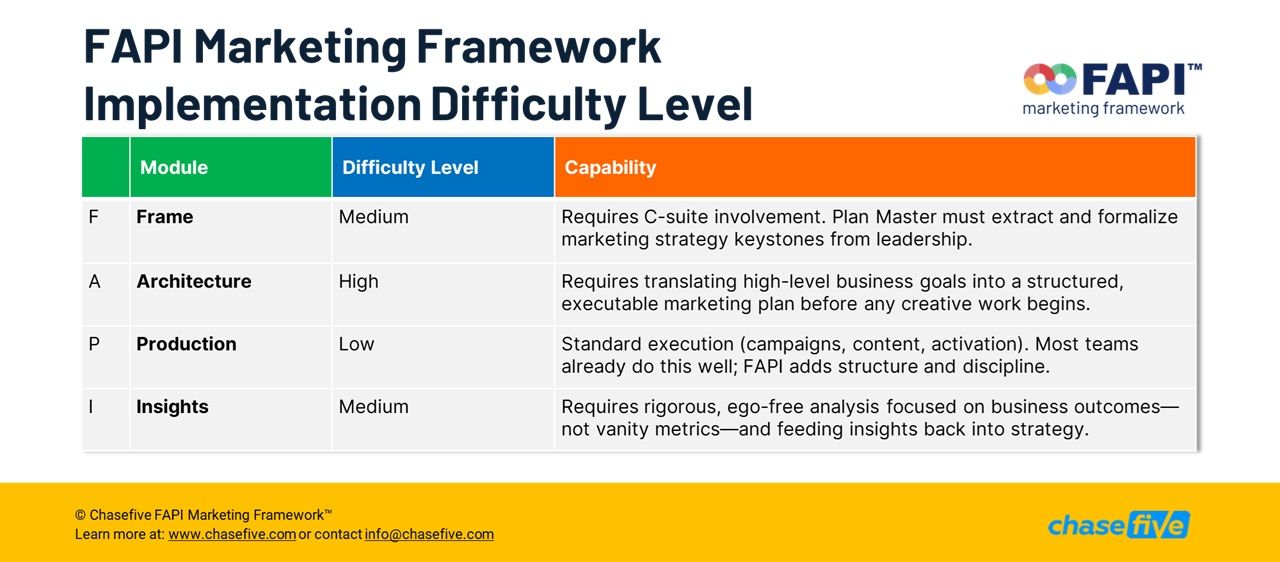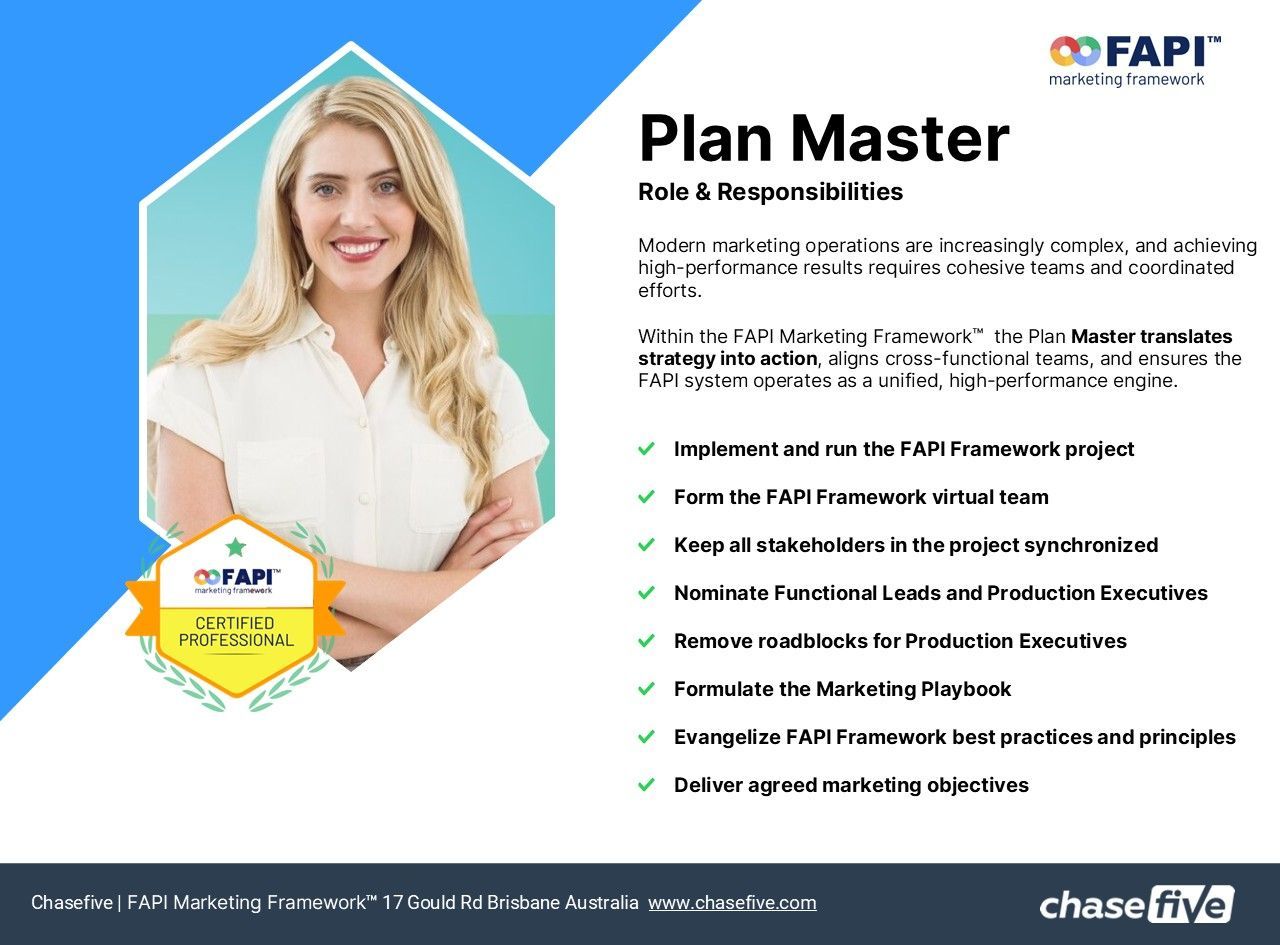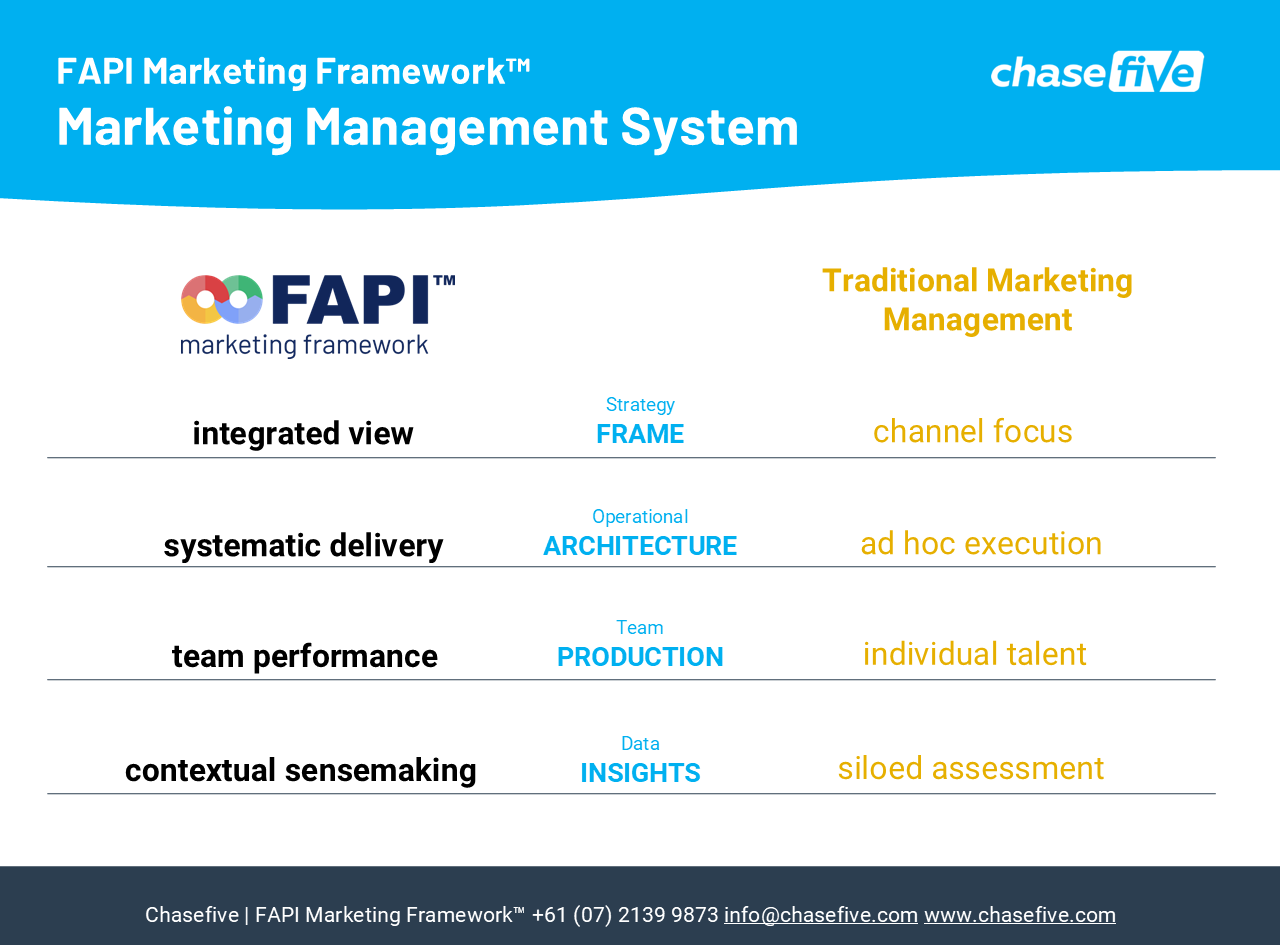Rethinking Marketing Organizational Alignment with the FAPI Marketing Framework™
In a rapidly evolving marketing landscape, organizations face the challenge of aligning their business vision with marketing strategies. The FAPI Marketing Framework™ emerges as a transformative approach, addressing the complexities and bridging the gap between vision and execution while ensuring team synchronization.
The landscape of modern marketing is becoming more complex, blurring the lines between different customer-oriented functions and calling for a more refined approach to managing marketing functions.
The marketing alignment issue can be broken down as follows:
- Pressures on budget and demand for tangible results: a growing emphasis on marketing initiatives that deliver measurable and impactful outcomes.
- Alignment with business business vision and goals: the critical need to ensure marketing initiatives resonate with and support broader organizational objectives.
- Collaboration across functions: the importance of seamless integration between marketing and other business departments.
- Industry-centric specificity: the necessity for marketing efforts to be deeply rooted in industry-specific insights.
- Responsiveness to market changes: the imperative for marketing strategies to be agile and adaptable to shifting market trends.
- Clarity in marketing roles: the essential requirement for well-defined roles and responsibilities within the marketing team.

The essence of the FAPI Marketing Framework™
The FAPI Marketing Framework™ is a comprehensive approach to modern marketing management designed to enhance marketing functions within organizations. It is based on three foundational pillars: Coherence, Collaboration, and Adaptability.
These pillars ensure a connected process across the entire organization, from senior management to production executives, and facilitate responsiveness to changing market conditions. The framework involves continuous monitoring and updating to align with the organization's evolving needs and the dynamic marketing landscape, promoting long-term growth and success.
The framework advocates for a cohesive and integrated marketing process, covering all aspects from planning to execution and analysis. This integration ensures a unified message, streamlining decision-making, aligning actions with marketing goals, and driving efficiency by reducing redundancy.
Collaboration is also a key aspect, requiring the participation of various stakeholders within the business, fostering innovation, and improving agility to quickly respond to market changes.
Finally, the FAPI Marketing Framework™ is adaptive and metrics-led, capable of responding to changes and new information through a recursive and self-correcting process. This adaptability is crucial in today's ever-changing marketing environment, allowing businesses to capitalize on opportunities, stay ahead of competitors, and minimize brand risks. The FAPI Marketing Framework™ is positioned as an essential tool for developing successful marketing functions in the current evolving landscape.
Positioning marketing teams for success
The challenge of high staff turnover in marketing departments is a common issue faced by businesses worldwide. Retaining top talent and effectively motivating employees in crucial marketing roles is vital to any organization's long-term success.
The FAPI Marketing Framework™ provides a holistic approach, empowering marketing teams and fostering creative excellence. It provides essential tools, resources, and guidance, enabling teams to develop impactful marketing campaigns that resonate deeply with their target audience.
Designed to unlock creative potential, the FAPI Marketing Framework™ supplies marketers with the necessary resources to align marketing strategies and planning with overarching business goals, enhancing marketing efficiency and ensuring that every investment delivers significant returns.
The FAPI Marketing Framework enhances organizational performance of marketing teams through a series of structured steps:
1) Strategic alignment: The framework begins by aligning marketing strategies with the company’s overarching business goals, ensuring that every marketing effort contributes meaningfully to the broader objectives of the organizatio
2) Comprehensive resource provision: It equips teams with the necessary tools and resources, tailored to the specific needs of each campaign, enabling marketers to execute their strategies effectively and efficiently.
3) Collaborative involvement: The framework fosters a culture of collaboration, involving stakeholders from various departments. This inclusive approach encourages diverse insights and ideas, leading to more innovative and well-rounded marketing initiatives.
4) Continuous learning and adaptation: The FAPI Marketing Framework emphasizes the importance of agility, encouraging teams to adapt their strategies in response to market feedback and evolving trends. This dynamic approach ensures that marketing efforts remain relevant and effective over time.
5) Performance monitoring and analysis: It includes a robust mechanism for tracking and evaluating the performance of marketing campaigns. This data-driven approach allows teams to measure success accurately and make informed decisions for future campaigns.
6) Enhanced communication and transparency: The framework promotes clear and open communication within the team and across the organization, ensuring that all members are aligned on objectives, strategies, and outcomes.
The transformative role of FAPI Marketing Framework™
The FAPI Marketing Framework™ is a planning and organizational methodology that helps marketing management teams to align their marketing efforts with an organization's strategic vision. The framework emphasizes collaboration, audience-centric approaches, and integration to create effective, unified, and synchronized marketing strategies.
By adopting the FAPI Marketing Framework™, marketing teams and consultants can improve their marketing results and align them with the organization's overarching business goals.
For free resources and support register at the
FAPI Marketing Framework Academy







